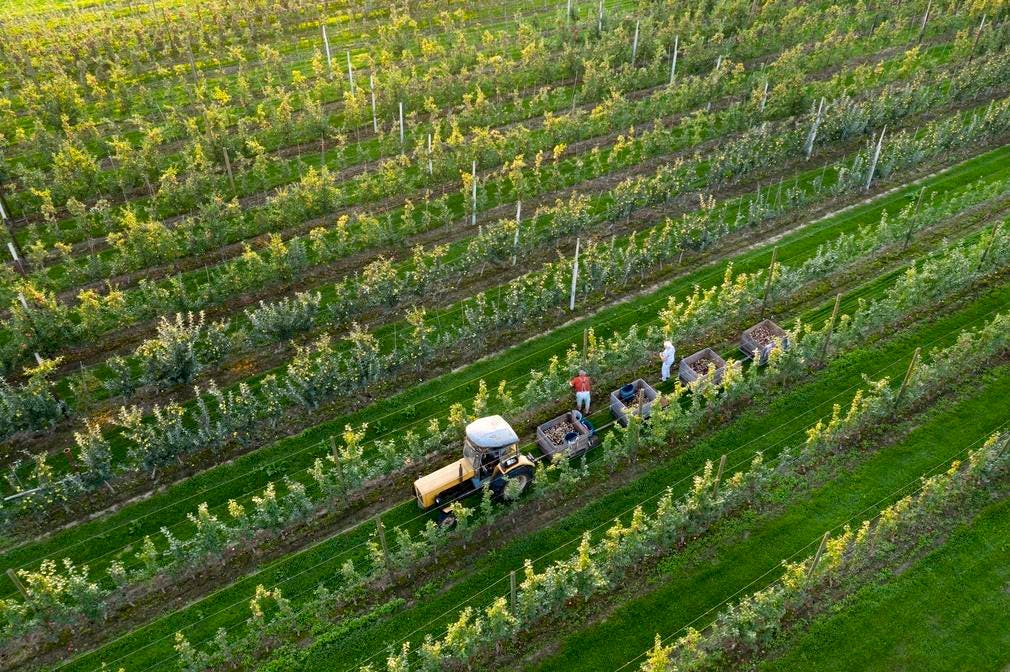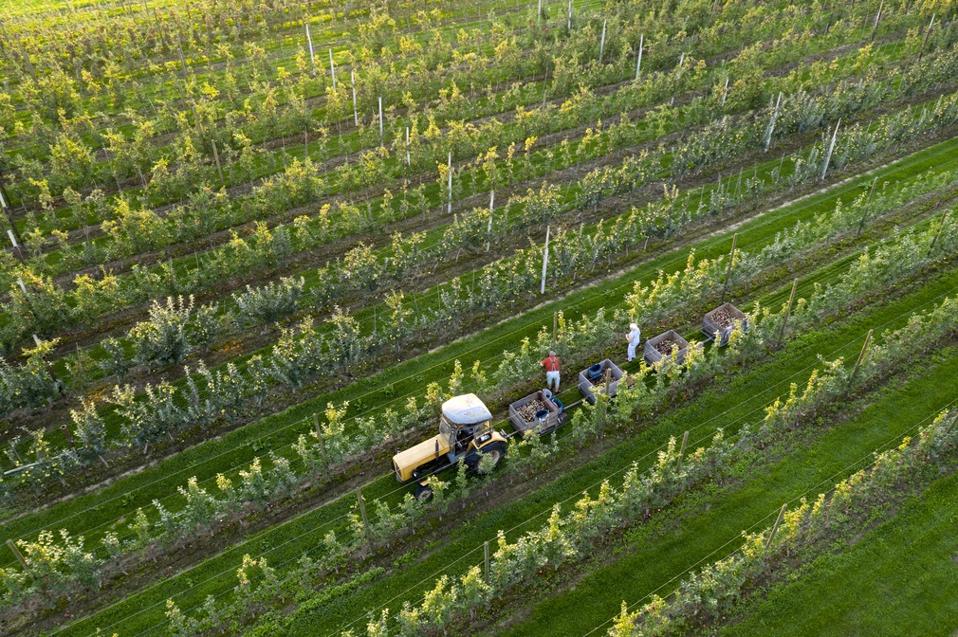Artem Milinchuk, Founder and Head of Strategy of FarmTogether.
In an investing climate marked by volatility—from fluctuating interest rates to stubborn inflation and equity market uncertainty—one signal of resilience is emerging from the agricultural sector. According to the USDA’s latest projections, U.S. net farm income (NFI) is expected to climb 29.5% year over year in 2025, reaching $180.1 billion. This would make it the second-highest nominal total on record, just shy of the 2022 peak, and a notable rebound after two consecutive years of decline.
Though just shy of an all-time high, this sharp rebound signals more than just a cyclical uptick—it underscores why farmland is regaining attention as a historically stable and income-generating real asset.
A Recovery Rooted In Fundamentals
2025’s projected NFI marks a significant return to strength. Adjusted for inflation, the USDA estimates this year’s figure will still sit about 8.9% below 2022’s high, but the underlying drivers point to broad-based resilience. Higher commodity prices, improved yields and more stable input costs are all contributing to this resurgence.
More importantly for investors, rising net income reinforces the underlying fundamentals that support farmland as an asset: productivity, cash flow and long-term value creation.
Income Stability In An Uncertain Market
Agriculture continues to demonstrate its capacity to generate strong operating income at scale. For farmland investors, this characteristic translates to higher rental income, improved operator margins and reduced default risk—all levers that support more predictable returns.
Unlike many alternative assets, farmland produces a biological yield—crops—that generate annual income through production and sale. It remains one of the few hard assets with consistent income potential, supported by long-term appreciation. According to the quarterly NCREIF Farmland Property Index, U.S. farmland has delivered an average annual return of 10.15% between 1992 and 2024, with low volatility and returns composed of both income and appreciation.
Elevated farm profitability also typically reduces reliance on leverage for operators and increases resilience to market shocks—factors that can improve tenant health and support lease payments or profit-sharing agreements.
Still, farmland investing does come with considerations. Returns can vary based on crop type, operator performance and weather-related factors, and the asset class is typically best suited for long-term capital. As with any private investment, due diligence and manager selection remain critical.
A Tailwind For Land Values
Land values tend to follow income. The USDA already reported a 5% increase in average U.S. farmland values in 2024, and strong income in 2025 is likely to reinforce this upward trend. That matters for investors seeking capital preservation as equity and bond markets remain volatile.
Farmland’s return profile stands out among real assets. While commercial real estate has also historically offered strong income potential and diversification benefits, particularly in sectors like industrial and multifamily, farmland has historically experienced fewer drawdowns—a trend reflected in its lower volatility versus private real estate, as shown by the NCREIF Property Index. This relative stability is tied to the farmland’s role in essential food production and its limited supply.
Diversification That’s Not Theoretical
Farmland’s low correlation to public equities and fixed income isn’t theoretical—it’s backed by decades of data. The NCREIF Farmland Index recorded no negative annual returns through the dot-com bust, the Great Financial Crisis or the 2020 pandemic.
This resilience stems in part from the biological and seasonal nature of agriculture: Crops grow on a schedule, largely independent of financial market cycles. Farmland also exhibits inflation-sensitive characteristics, including lease structures that can adjust with inflation and commodities that tend to rise in price alongside broader CPI movements.
Why This Year’s Numbers Matter
While 2022’s record income was driven in part by temporary commodity price spikes tied to the Russia-Ukraine conflict, 2025’s rebound appears to reflect more durable dynamics: normalized supply chains, stabilized input costs and sustained global demand for U.S. exports.
As a result, many investors are taking a broader look at real assets, seeking stability, income and inflation protection amid rate volatility. Allocations to gold, infrastructure and private credit have all grown, reflecting this shift toward tangible, income-generating value. At the same time, certain sectors of commercial real estate face structural headwinds, prompting further reallocation. Farmland, once considered too complex or niche, is attracting renewed attention.
Today, access is no longer a barrier. Accredited and institutional investors can now gain exposure through direct deals, pooled funds and 1031 exchange-eligible options. This accessibility has brought farmland into the broader conversation around alternatives and endowment-style investing, with characteristics that differ meaningfully from traditional equities and bonds.
A Benchmark Year
The $180.1 billion projection may not break records in real terms, but it marks a meaningful turning point after two years of retrenchment. More importantly, it provides objective evidence that U.S. agriculture is on a strong footing heading into the back half of the decade.
For long-term investors, that matters. Farmland isn’t about market timing—it’s about owning an essential, income-generating asset class backed by real production, global demand and finite supply.
In an era where capital is searching for resilience, 2025’s farm income rebound offers a rare data point: a sector that’s both profitable and under-allocated, at a time when both are hard to find.
The information provided here is not investment, tax or financial advice. You should consult with a licensed professional for advice concerning your specific situation.
Forbes Finance Council is an invitation-only organization for executives in successful accounting, financial planning and wealth management firms. Do I qualify?



